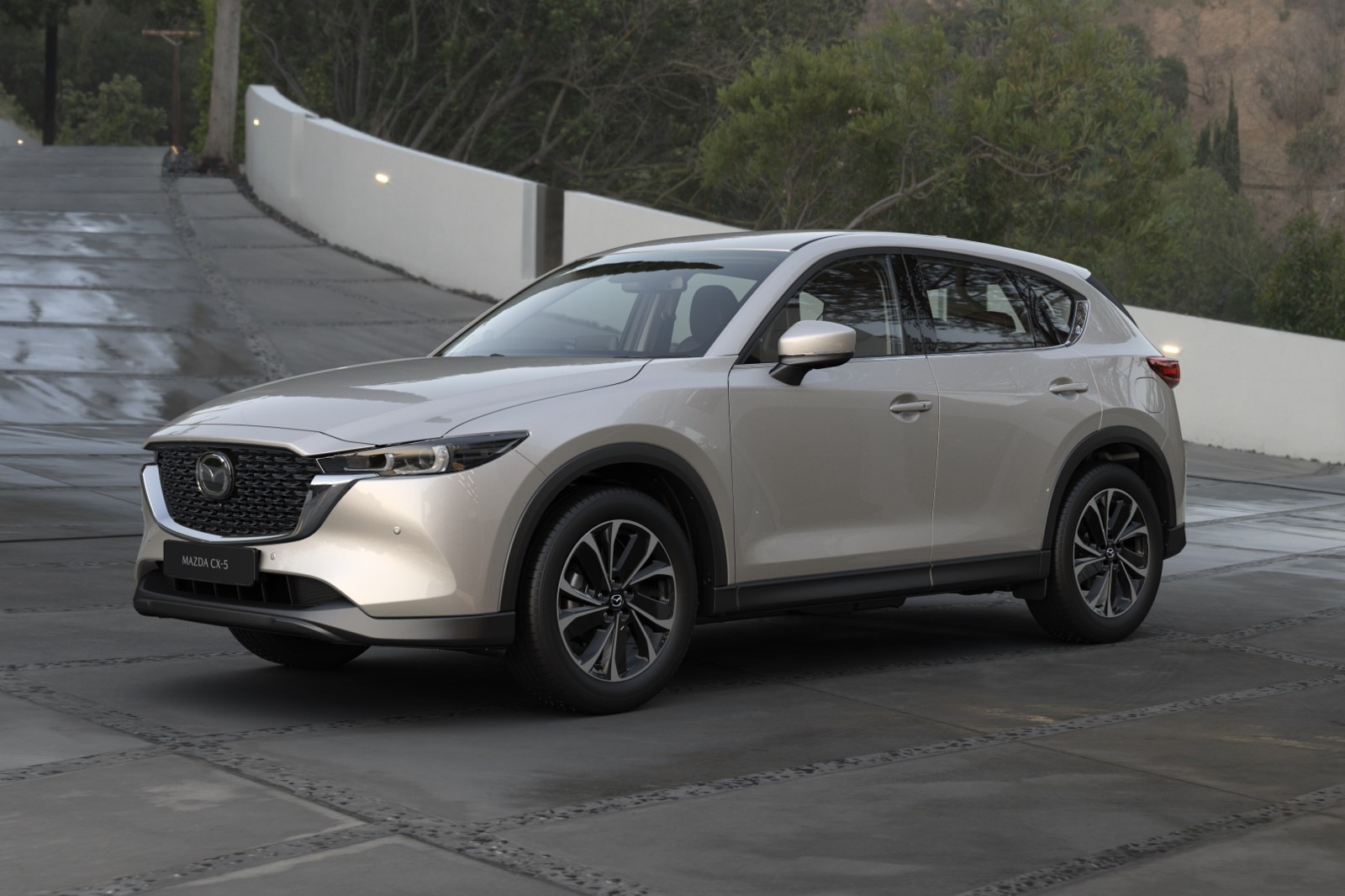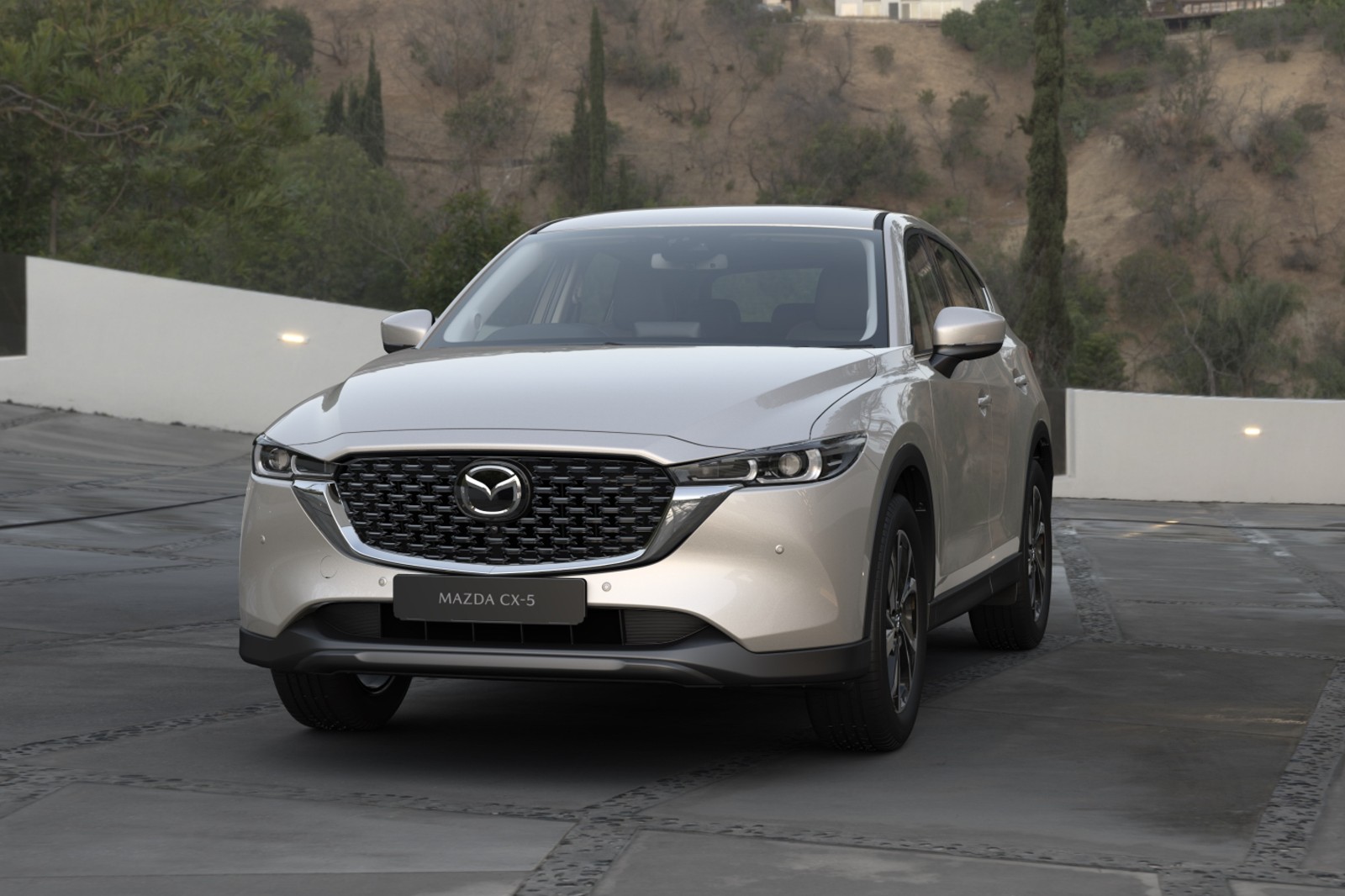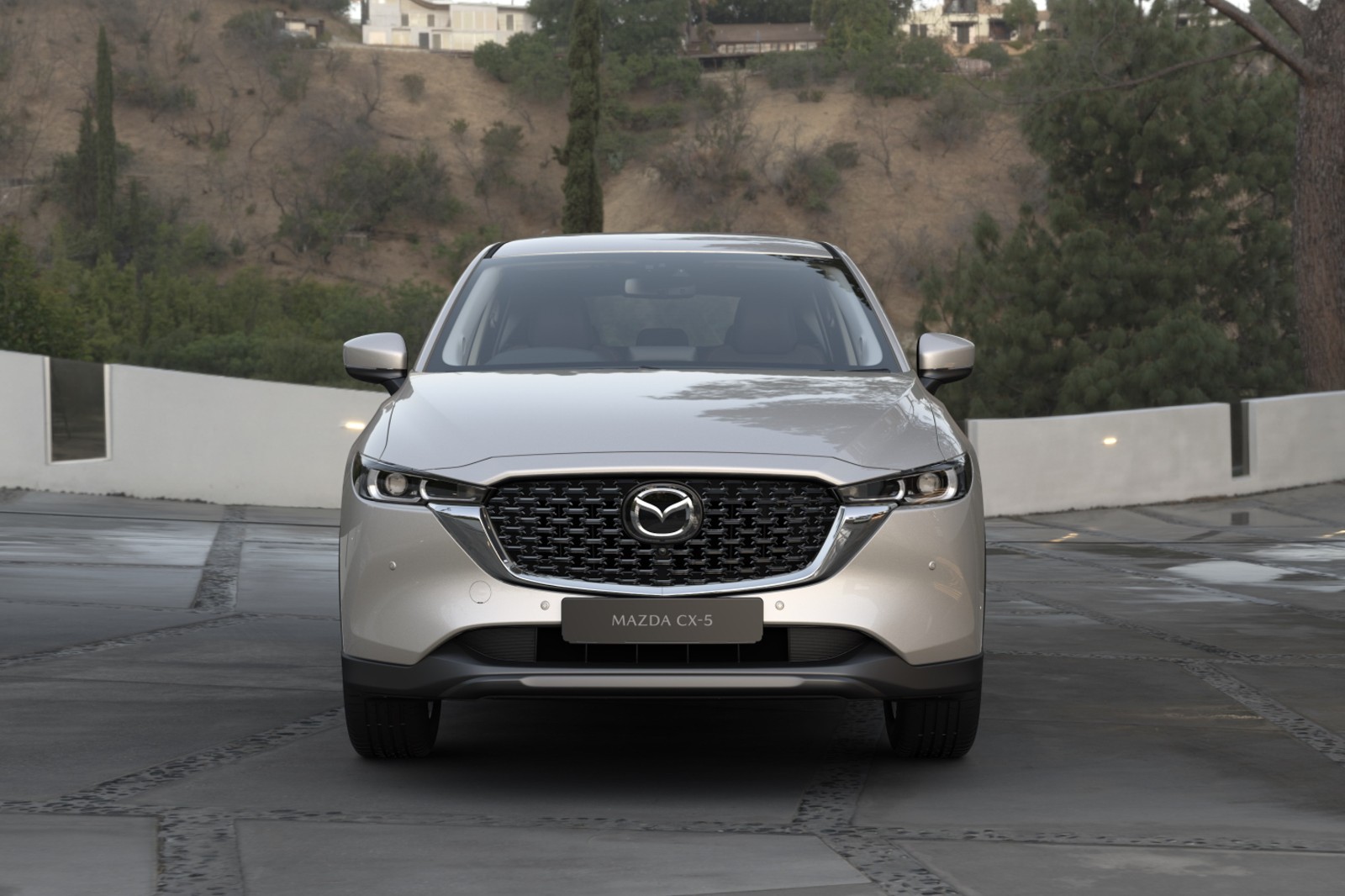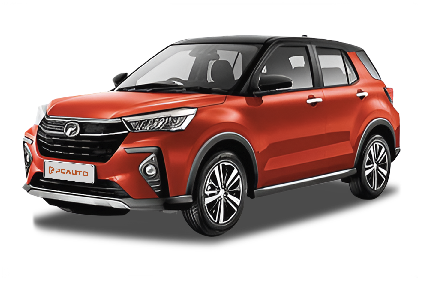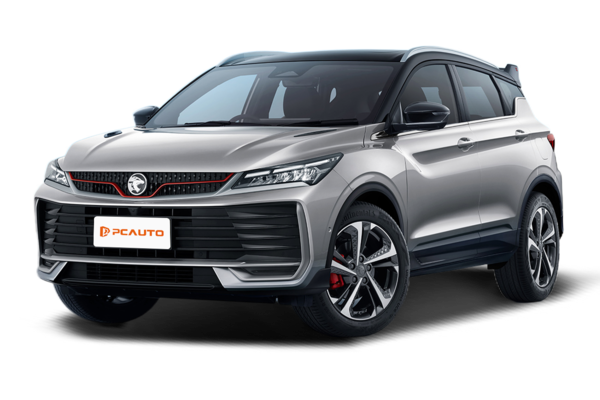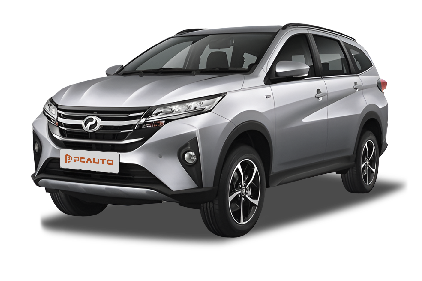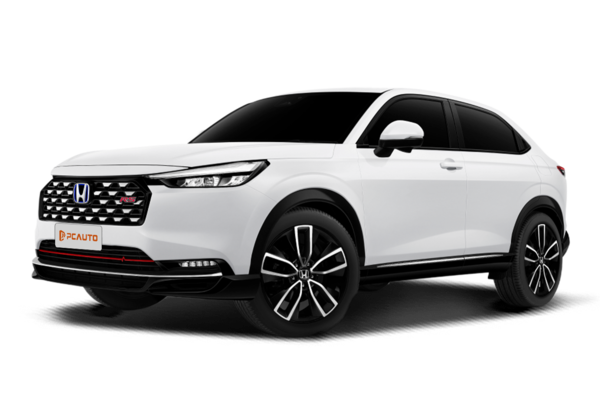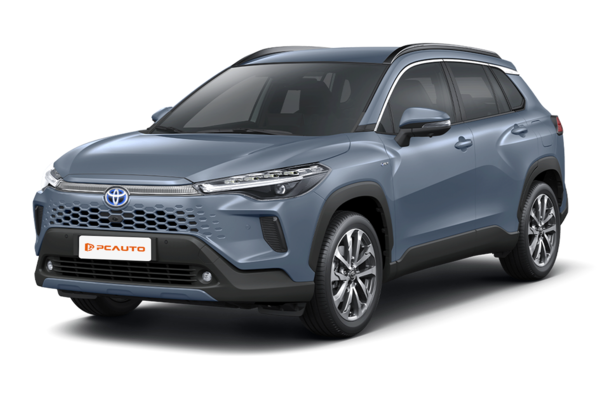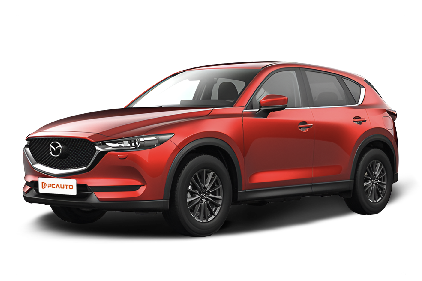Q
Is the Mazda CX-5 all-wheel drive (AWD)?
The Mazda CX-5 is offered in both front-wheel drive (FWD) and all-wheel drive (AWD) configurations in the Malaysian market, with the exact setup depending on the specific trim level and model year. Generally speaking, the higher-spec 2.5L variants typically come equipped with the AWD system, while the entry-level 2.0L models might stick with just front-wheel drive. Mazda's i-ACTIV AWD tech is pretty nifty – it constantly keeps an eye on road conditions and your driving style, then automatically shifts torque between the front and rear wheels. This really helps boost stability on slippery surfaces or through corners, making it a solid fit for Malaysia's rainy weather and those trickier suburban roads. If you're someone who does a lot of highway driving or just wants that extra peace of mind when it comes to handling, the AWD version is the safer bet, though it's worth keeping in mind that it might sip a tiny bit more fuel than the FWD models. When Malaysian buyers are out shopping, they should definitely factor in their budget and how they'll actually use the car. Popping into an authorized dealership to confirm the drive configuration for specific trims is a smart move, and I'd highly recommend taking both versions for a test drive to feel the difference firsthand. Other SUVs in the same class, like the Honda CR-V or Toyota RAV4, offer similar drive options, but the CX-5 holds its own with that eye-catching Kodo design and the peppy Skyactiv technology under the hood, keeping it pretty unique in the segment.
Q
How many miles can Mazda CX 5 travel?
Under normal maintenance and driving conditions, the Mazda CX - 5 can typically travel 200,000 to 300,000 kilometers – and often even more. Of course, its lifespan mainly depends on your driving style, how regularly you service it. And let's not forget Malaysia's unique road conditions and climate. Mazda's Skyactiv tech is well - known for its efficient, reliable engines and transmissions. Therefore, adhering to regular oil changes, transmission maintenance, and chassis component inspections will definitely help keep it on the road longer. Though, Malaysia's hot and humid weather can take a toll on rubber parts and electronics. So, I'd recommend paying extra attention to maintaining the AC system and seals, and investing in good - quality coolant and a solid battery. The CX - 5 performs well compared to other SUVs in its class for durability; plenty of owners report theirs still remain in good mechanical condition even after 150,000 km. To maximize its lifespan, besides following the official service schedule, try to avoid frequent short - distance trips and aggressive driving – both can really crank up engine wear. For Malaysian buyers eyeing a used CX - 5, be sure to conduct a thorough inspection of the engine's condition, how smoothly the transmission shifts, and check for any chassis rust.
Q
How to check the tire pressure of Mazda CX-5?
Checking the tire pressure on your Mazda CX-5? Here's how to do it right. First off, make sure those tires are cold—either the car's been parked for at least 3 hours or you've driven less than a mile (1.6 km). Grab a tire pressure gauge, unscrew the valve cap, and press the gauge firmly onto the valve stem to get a reading.
Now, compare that number to the manufacturer's recommended pressure. You'll find the sticker with this info on the driver's side door jamb or inside the fuel filler cap. Typically, it's around 230 kPa for the front tires and 220 kPa for the rears, but always go by what your specific vehicle says. If the pressure's low, top it up with an air compressor. Too high? Press the valve core to let some air out.
Given Malaysia's hot climate, aim to check your tire pressure at least once a month—definitely do a quick check before any long drives, too. Heat can cause pressure to rise, and incorrect tire pressure messes with fuel efficiency, grip, and how long your tires last.
For extra peace of mind, think about getting a digital tire pressure monitor or upgrading your factory TPMS (if your CX-5 has it) to keep an eye on pressures in real time. Just a heads-up: you might need to tweak pressures a bit for different conditions, like highway driving or when carrying a heavy load, but never go above the maximum pressure listed on the tire sidewall.
Q
What type of gasoline does Mazda CX 5 require?
For the Malaysian market, the Mazda CX-5 is recommended to run on RON 95 unleaded petrol. This is the standard fuel for its Skyactiv-G high-efficiency petrol engine, perfectly suited for daily driving while keeping fuel economy in check. If you're after a bit more pep, RON 97 is an option too – its higher octane rating can marginally improve combustion efficiency at higher revs, though it's worth weighing up the price difference against the actual benefits you'll feel day-to-day.
Malaysian petrols meet international standards, and both RON 95 and RON 97 come with cleaning additives to help prevent carbon buildup. We'd suggest sticking to the factory-recommended fuel system cleaner at regular intervals to keep that engine purring. A crucial note: *avoid E15 or any ethanol-blended fuels* in the CX-5 range. The hot and humid Southeast Asian climate can amplify potential issues these fuels might cause to fuel system components over time.
Owners should also flip through the "Fuel Recommendations for Extreme Conditions" section in their manual – for instance, if you're regularly stuck in heavy traffic, you might want to slightly shorten your maintenance intervals. Fuel requirements can vary slightly between model years too; post-2023 variants, for example, have seen some tweaks to fuel adaptability. So, the most reliable sources? Always check the label inside the fuel filler cap or your owner's manual for the definitive word.
Q
How many miles can Mazda CX-5 travel?
The Mazda CX-5 is a beloved SUV here in Malaysia, and it's got a solid reputation for toughness. With proper maintenance and sensible driving, these things can easily hit 200,000 to 250,000 miles (that's roughly 320,000 to 400,000 kilometers) – maybe even more. Of course, how long it lasts really depends on how you drive it, how often you service it, and let's not forget Malaysia's unique road conditions and climate.
Mazda's Skyactiv tech is a big part of why the engine and gearbox are so efficient and reliable. Staying on top of regular oil changes, filter replacements, and brake fluid flushes will definitely help keep it going strong for longer. Now, Malaysia's hot and humid weather can be a bit rough on rubber parts and electronics, so it's a good idea to check things like chassis bushings and door seals regularly – those are the bits that tend to wear first.
One thing that really speaks to the CX-5's long-term dependability is how well they hold their value on the used car market. You'll still see plenty of CX-5s over 10 years old running around in great mechanical shape. If you're planning to keep yours for the long haul, sticking to the official service schedule and using genuine or approved parts is key. Not only will that keep it performing at its best, but it'll also make sure you get a better price when it's time to sell.
Q
What are the differences between Mazda CX-5 and CX-50?
Mazda's CX-5 and CX-50 might both fall into the compact SUV category, but they've got distinct vibes and target different drivers. The CX-5 leans more towards that classic urban SUV look – think family-friendly, practical, and right at home navigating city streets and school runs. The CX-50, though? It's all about that crossover adventure spirit. It looks sportier, has a more rugged stance, sits a touch higher off the ground, and feels better suited for light off-roading or weekend getaways into the great outdoors.
Both come packing Mazda's renowned Skyactiv tech, which is a given. But here in Malaysia, the CX-50 might get some local love with tweaks like an air-con system dialed up for our tropical heat or suspension tuning that better handles our road conditions. Step inside, and the CX-5 goes for that luxuriously refined feel, while the CX-50 swaps some of that for tougher, more durable materials – smart for when you're hauling gear or dealing with the occasional muddy boot.
Under the hood, you're probably looking at similar engine options, but the CX-50 might get a little extra love in the low-end torque department to help it tackle trickier terrain with more confidence. So, for Malaysian buyers, it really boils down to what you need. If your life is mostly city driving and you value that plush, comfortable ride, the CX-5 is a solid bet. But if you're someone who hits the trails on weekends or just digs that more aggressive, go-anywhere aesthetic, the CX-50 is gonna be right up your alley.
And hey, it's worth remembering that Mazda's distributed here by Bermaz Motor, so their after-sales network is pretty well-established. Whichever one you pick, you're getting that signature Mazda driving fun and the reliability the brand's known for.
Q
Which model of Mazda CX-5 is equipped with remote start function?
When it comes to whether the Mazda CX-5 in the Malaysian market comes with remote start functionality, here's the lowdown: none of the currently available 2023 CX-5 models come standard with a factory-fitted remote start system. However, owners can opt to install third-party certified remote start kits through Mazda Malaysia's authorized dealerships. These kits are typically compatible with the CX-5's smart key system, allowing you to warm up the engine or pre-cool the cabin from around 50 meters away using a specific key fob button sequence or a mobile app.
Now, in Malaysia's hot climate, this feature is more than just a convenience—it's pretty much a lifesaver. But remember, always make sure the vehicle is in Park and the area around it is well-ventilated before using remote start. Also, sticking with dealer-approved, certified kits is a smart move to avoid any issues with your electrical system warranty down the line.
It's worth noting that competitors like the Honda CR-V and Toyota RAV4 do offer similar remote start features on their higher-spec trims. So, if this tech is a priority for you, it might be worth cross-shopping these Japanese rivals to see which brand's smart feature package best fits your budget and needs.
If you are considering going the aftermarket route with a non-dealer system, do your due diligence. Double-check that any third-party remote start kit you're eyeing complies with JPJ regulations here in Malaysia and won't interfere with the car's original anti-theft systems. Better safe than sorry when it comes to messing with your vehicle's electronics!
Q
How to activate the all-wheel drive (AWD) system of the Mazda CX-5
Activating the four-wheel drive (4WD) function in the Mazda CX-5 usually doesn't require any manual input, thanks to its intelligent all-wheel drive system, i-ACTIV AWD. This system automatically adjusts the power distribution between the front and rear wheels based on road conditions. For instance, it'll kick into 4WD mode on slippery surfaces or during hard acceleration to boost traction, and then switch back to front-wheel drive when cruising smoothly to save fuel. It's a really practical setup for Malaysia's unpredictable weather and varied road conditions.
If you want to make sure the 4WD system is active, you can switch to "Off-Road" driving mode (if your CX-5 is equipped with it). This optimizes the 4WD performance for rough terrain, but honestly, most of the time you won't need to do anything—the system's smart enough to figure it out on its own.
It's important to remember that while 4WD improves stability, it doesn't make the car completely immune to skidding. You still need to drive carefully, especially during the rainy season or on muddy roads. Also, regularly checking your tire condition and keeping up with 4WD system maintenance is key to keeping everything running smoothly. For Malaysian drivers, understanding your vehicle's 4WD capabilities and using them wisely can help strike a better balance between safety and fuel efficiency in your daily drives.
Q
Where is the front radar sensor located in the Mazda CX-5?
The front radar sensors of the Mazda CX-5 are typically mounted low on the front bumper, usually near the sides of the license plate frame or around the grille area. Exact positioning can vary slightly depending on the model year and trim level, so I'd recommend checking your owner's manual or popping by an authorized Mazda service center here in Malaysia to confirm the specifics – better safe than sorry for accuracy. These front radar sensors are key components of the Advanced Driver Assistance Systems (ADAS), working behind the scenes for features like adaptive cruise control, forward collision warning, and automatic emergency braking. They're basically your extra set of eyes on the road, helping boost overall driving safety.
Given Malaysia's hot, humid, and often rainy climate, it's a good idea to regularly clean the surface of these radar sensors. Mud, rain splatter, or random road grime can block them and throw off their accuracy. Also, avoid sticking any aftermarket accessories or doing modifications near the sensors that might interfere with their signals – keeping that area clean and unobstructed helps maintain consistent system performance. If you spot a radar fault warning pop up on your dashboard, don't ignore it. Check first if the sensor's damaged or blocked, and if you're unsure, it's best to get a professional technician to diagnose and fix the issue promptly.
Q
Which model of Mazda CX-5 is equipped with a heated steering wheel?
In the Malaysian market, the higher-spec versions of the Mazda CX-5 typically come with a heated steering wheel. Specifically, the 2.5L High Plus and 2.2L Diesel High Plus trim levels offer this comfort feature, which proves really handy when driving in the cooler highland areas or during the rainy season. A heated steering wheel doesn't just up the driving comfort ante – it also helps improve blood circulation in your hands during chilly weather and cuts down on driver fatigue. It's worth noting that since Malaysia's a tropical country, these kinds of features aren't as common as they are in temperate regions, but some folks still dig the added value they bring. Other CX-5 trims like the 2.0L Mid and 2.0L High don't get this as standard, so before you buy, it's a good idea to check the latest spec sheets on the official website or with a dealer – model year updates can sometimes tweak what's included. Plus, heated steering wheels are usually bundled with perks like premium seat heating and automatic climate control, part of those luxury packages. It’s another sign of Mazda pushing that "affordable luxury" vibe with the CX-5.
